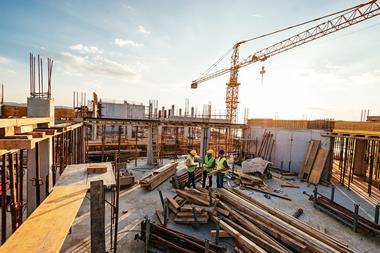Energy transition and green investment will be major contributors to infrastructure growth over the next 15 years
Oxford Economics has teamed up with Aon’s Global Construction and Infrastructure Group to publish a new global construction forecast report to 2037.
The report - yet to be published - anticipates growth of $5.6 trillion in construction over the 15-year period from 2022 to 2037 – representing a growth of over 60% in the size of the global construction market.
Climate challenge constructions ‘greatest opportunity’
“The challenges of dealing with climate change will be a significant growth driver for construction globally and will create new industries and employment,” says Graham Robinson, Global Infrastructure and Construction Lead at Oxford Economics.
”With the built environment accounting for almost 40% of all greenhouse gas emissions globally, the transition to clean energy and new resilient infrastructure will boost growth for construction.”
The need to build resilient infrastructure and the race to achieve Net Zero by 2050 will mean huge programmes of infrastructure.
Investment in the transition of energy grids to renewable sources of energy and transport networks towards green mobility will remain high growth markets as the $1.2 trillion Infrastructure Plan in the US and €750 billion Next Generation EU promote growth and recovery from the pandemic.
Current inflationary pressures across economies are expected to largely dissipate starting in 2023 as the effects of an unprecedented surge in demand post-Covid normalise, and supply-chain disruptions are resolved.
Inflation to dissipate through 2023
Headline inflation is not expected to return to pre-pandemic levels until late 2023 while persistent inflation for key construction materials and labour is likely to remain for longer, into the medium term, until supply chain disruptions ease.
With central banks firmly focused on bringing inflation down, the risk of a near-term recession has increased – a global recession is expected to be avoided, but contractions in GDP in both Europe and North America during 2023 are expected.
The Eurozone looks particularly vulnerable to any further shocks as the Russia-Ukraine war continues and the German construction market is already experiencing a sizeable downturn this year.
“The use of technology to build the digital twins of real assets and the adoption of modern industrialised construction, will drive decarbonisation and improve productivity massively,” said James MacNeal, global head of Construction and Infrastructure, Aon Global Infrastructure and Construction Group.
”The digitalisation of construction supports innovative risk management solutions as construction risks become more transparent and auditable.”
Continued shift to emerging markets
The fastest-growing region globally is expected to be emerging Asia, growing by $4.2 trillion to an $8.5 trillion construction market by 2037.
India is expected to be the fastest-growing major construction market globally and will double its size from 2022 to 2037.
China is expected to contribute $3.3 trillion of growth to the global construction market to 2037 – over 50% of global growth for construction.
Growth in non-residential sectors such as healthcare and biotech will outstrip growth in infrastructure or housing as China’s economy transitions towards a market-led economy.
Rising populations and rapid urbanisation in emerging markets will be a key growth driver for construction. Global population is expected to rise by one billion people, from 7.9 billion in 2022 to 9.0 billion by 2037.
Population growth and urbanisation will grow fastest across sub-Saharan Africa. Latin America is expected to grow at the same pace as North America while Western Europe and the developed economies of Asia Pacific are expected to be the slowest-growing regions.
The construction market in Japan is expected to remain the same size in 2037 as it was in 2022 with growth declining from 2028, as the population shrinks.




















No comments yet